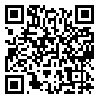BibTeX | RIS | EndNote | Medlars | ProCite | Reference Manager | RefWorks
Send citation to:
URL: http://rjms.iums.ac.ir/article-1-3571-en.html
Background: Along with the rapid development in technology and Internet-Based education, combined learning methods have been extended and traditional classes have been propelled toward the virtual learning environments. The purpose of this study was the survey of two traditional and virtual teaching methods in learning of the course of “Introduction to Dental equipment and their maintenance” for the students of PhD General Dentistry at Shahid Beheshti University of Medical Sciences.
Methods: In this semi experimental study, by randomized allocation, the incoming students were divided into two groups of observation and intermediacy; 41 students from the September-Entrance in 2011 and 41 students from the January-Entrance in 2012were selected as observation (were taught by the professor of corresponding course) and intermediacy group (were taught in virtual learning by CD), respectively. After the end of the semester, the effect of the two above-mentioned methods on the knowledge of the students was assessed by using the awareness questionnaire. The face and content validity evaluation of questionnaire was done by the qualitative methods based on the standard methods and in the quantitative methods it was done by using content validity ratio CVR= +1 and content validity index CVI= +1 referring to Lawshe table. The reliability of the final exam was done based on Cronbach's alpha coefficient. The amount of the effect of the two above-mentioned methods on performance of students was done by using OSCE (Objective Structured Clinical Evaluation), its face and content validity was confirmed based on reference books and experienced professors’ and Faculty members’ comments. The reliability of the final exam was confirmed based on Pearson Correlation Coefficient. The SPSS statistical software was used in order to analyzing the data.
Results: Content validity ration was CVR= +1 and content validity index was CVI= +1. Moreover, the reliability of the final exam was calculated and confirmed as 0.98, based on Cronbach's alpha Coefficient. The reliability of the final exam was in the method of determining correlation performance test scores with the average of theoretical and experimental scores based on Pearson Correlation Coefficient and they were: (0.117) p=0.429) and 0.376(p=0.008), respectively. Also, the amount of the correlation of each skill with the total score of performance assessment test was 0.84 (p= 0.001) in order to determine the internal structure and the total reliability of the final exam was the final scores of awareness testing in the students of traditional groups which was higher than the students of virtual group, (p= 0.177). In the performance assessment scores, the average of virtual group was 8.05 that showed no significant difference with the average of traditional group [8.02 (p= 0.907)].
Conclusion: This study revealed that virtual teaching method, similar to the traditional teaching method, gained enough success in teaching program which included increase in the knowledge and performance of students in the area of the course. This success is in a way that it can be used as an alternative method in dentistry faculties.





